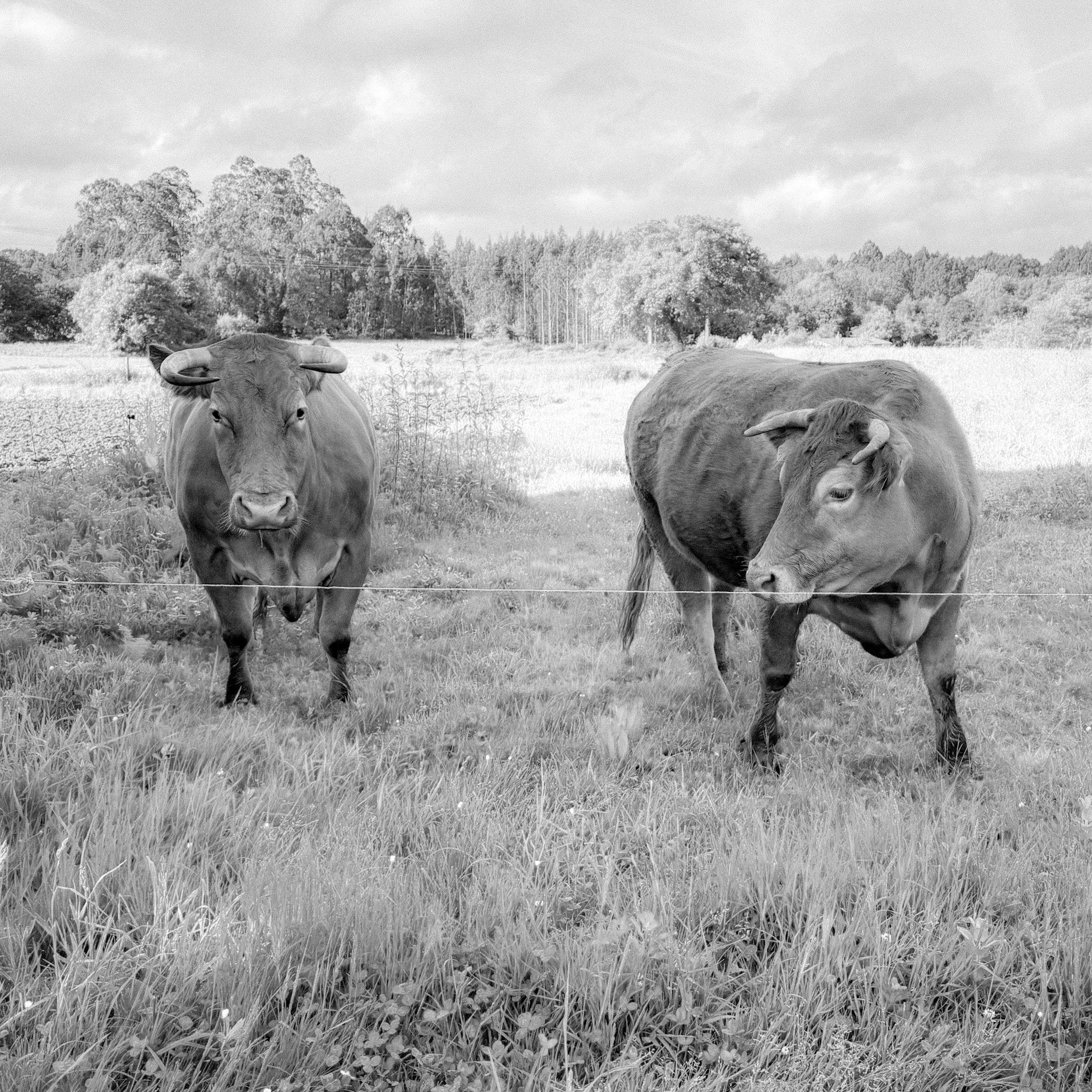
Cows on the Camino: Companions of the Quiet Path
Share
Anyone who walks the Camino de Santiago will, at some point, share the road with cows. Whether grazing peacefully in the fields of Galicia, crossing the trail in small herds, or watching silently from behind stone fences, cows are a constant and gentle presence along the route. For many pilgrims, they become unexpected companions—symbols of rural life, rhythm, and stillness.
The Camino winds through some of Spain’s most agricultural regions, and cattle farming is especially prevalent in Galicia, where lush green fields, cool mists, and frequent rain create ideal pastureland. The Galician blonde cow (Rubia Gallega) is a common sight—large, soft-eyed, and golden-coated. In this part of Spain, dairy and beef production are central to rural economies, and cows are woven into the daily life of villages that have supported pilgrims for centuries.
For walkers, encounters with cows often begin with a faint smell in the air or the sound of bells clinking from somewhere up the trail. You might come across a herd being led down a country road by a farmer and a dog, or find yourself pausing while a small group of cows crosses the path at their own unhurried pace. On narrow trails, pilgrims may have to step aside or wait respectfully. These small pauses offer moments of stillness—chances to observe, smile, and perhaps exchange a knowing glance with a fellow walker amused by the shared detour.
Cows also contribute to the sensory landscape of the Camino. Their bells, often worn around their necks to help farmers keep track of them in the hills, create a gentle soundtrack that blends with birdsong and the rustle of wind in the grass. Their presence signals a slower, simpler world—one rooted in physical labor, seasonal rhythm, and deep connection to the land.
While generally calm, cows are large animals and deserve space. Pilgrims are advised to approach with caution and respect, especially if calves are nearby. Most cows are accustomed to human presence and are indifferent to pilgrims passing by. However, it’s wise not to startle them or attempt to pet them. And, of course, pilgrims should never block their path or disrupt the herd, particularly when local farmers are at work.
For many walkers, these moments with cows—unexpected and quietly comical—become part of the memory of the Camino. They offer levity, photo opportunities, and a grounding sense of place. Some pilgrims name the cows they see, or come to look forward to spotting them in early morning fog or late afternoon sun.
Beyond the charm, cows on the Camino are a reminder of continuity. These animals have lived and worked this land for centuries, long before modern pilgrims arrived. They are part of the ancient, living culture that still supports the trail.
In a journey so often defined by movement and striving, cows embody something else: patience, presence, and peace. As they chew slowly beside the road, they seem to ask—without words—What’s the rush? The path will wait.

